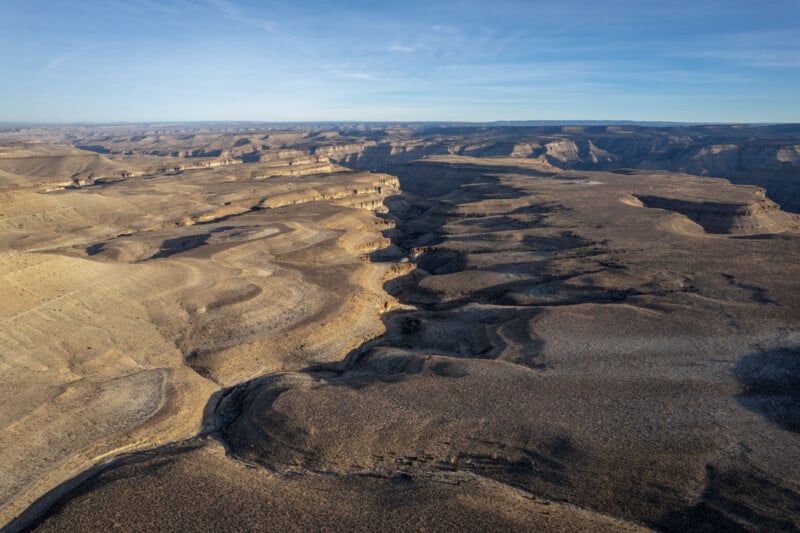 Canyonlands in Utah (drone photo by James Roh)
Canyonlands in Utah (drone photo by James Roh)Photographer James Roh prefers to get as close as possible to his subjects. But when The Washington Post assigned Roh to photograph Utah’s vast public lands, he needed plenty of distance, relying on a drone and a small plane to capture broad landscapes.
The resulting Washington Post article showcased big-display aerial photography (published online January 19/January 28 in print) describing the tension between western states and the federal government over control and use of public lands.
“Earlier in my career — before drones — I would look for hills and buildings for these types of photos,” says Roh. “Now, I can quickly pop the drone in the sky and capture the wide, scene-setter image. This is especially convenient for environmental stories that are centered around the landscape.”
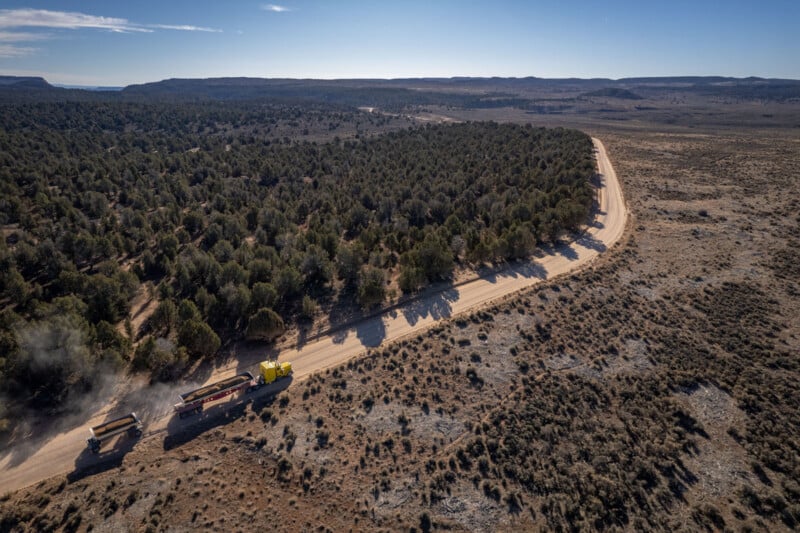 Truck on the road in Utah (drone photo by James Roh)
Truck on the road in Utah (drone photo by James Roh)Roh, a freelancer based in Utah, explains the challenges and benefits of aerial photography.
Drone License
Drone use for commercial purposes requires a Remote Pilot Certificate from the Federal Aviation Administration, commonly known as the FAA Part 107 certificate named for the relevant part of federal rules for an Unmanned Aircraft System.
“The test is just under $200,” says Roh, “but the real expense is the time commitment to studying. The test is surprisingly rigorous. You have to learn quite a bit of technical information such as being able to read sectional aeronautical charts.”
“Chances are, you won’t use most of this information on a regular basis but it’s important to know. My advice is to pay for an online prep course that goes over everything you’ll need to study and properly prepares you for the exam.”
A Part 107 FAA certificate demonstrates that drone pilots understand safety and operating regulations.
Camera Equipment
“For drone work, I currently use the DJI Air 2S. It is a nice balance between image quality and portability for travel,” says Roh.
“A lot of my assignments are in remote, hard-to-reach areas that require me to pack light, so this drone’s small size is convenient. I am planning to upgrade to another drone that features two lenses so I can get additional perspectives and compression.”
“For aerial photography (from aircraft), I use a Nikon 24-120 f/4 S lens on a Nikon Z8. I prefer a versatile zoom so that I can easily go from wide landscape to focusing on specific features of the landscape. A 24-70 2.8 could work as well if I needed it for low- light situations, such as dawn or dusk.”
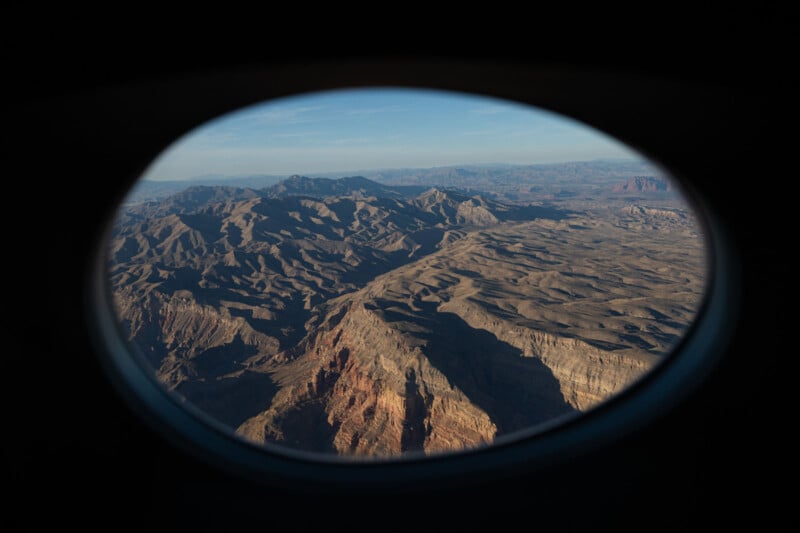 Photo taken from a small aircraft in Utah by James Roh
Photo taken from a small aircraft in Utah by James RohThe Limits of Drones for Aerial Photography
Drones typically are restricted to 400 feet above ground level.
“Most drones with built-in cameras have a wide angle lens,” says Roh. “But sometimes that’s not enough to fit in a frame so it’s necessary to use an airplane or helicopter to really get big perspectives.”
Lighting for Aerial Images
On occasion, Roh has discovered drones can thrive in harsh overhead lighting. He recommends testing lighting conditions.
“For aerial photography, it takes some readjusting to find what light works best,” he says. “Normally, harsh daylight creates challenging conditions but in the sky, it can cast strong shadows that actually make powerful compositional elements. It’s fun to fly the drone in different lighting conditions to see what you can come up with!”
When photographing from a plane, trial and error can help overcome glare and distortion from windows.
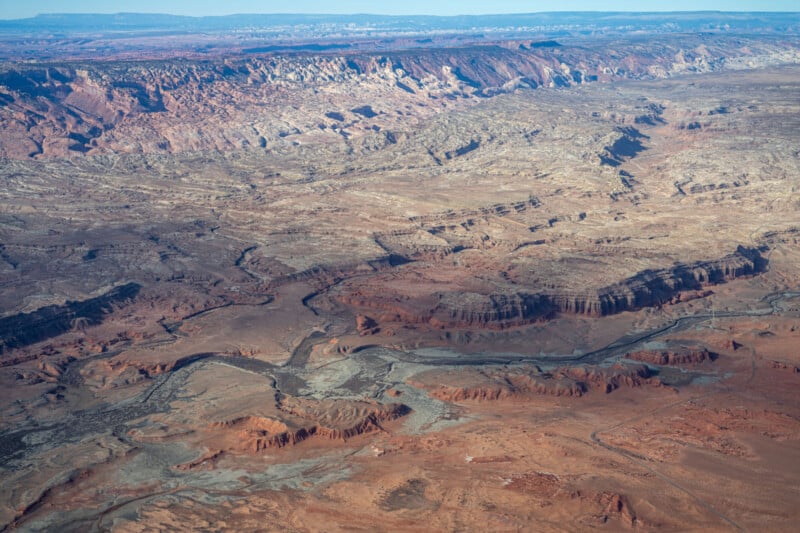 Photo taken from an aircraft by James Roh
Photo taken from an aircraft by James Roh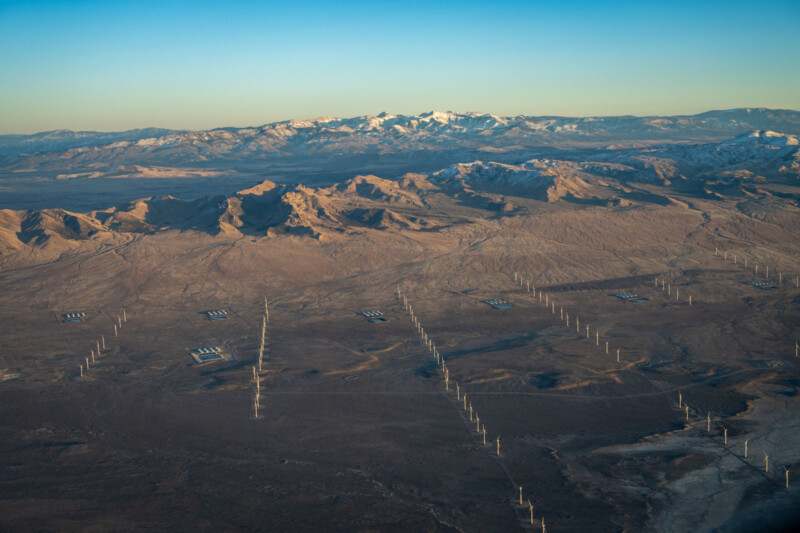 Photo taken from an aircraft by James Roh
Photo taken from an aircraft by James RohCredentials
James Roh, @james_myron_roh on Instagram, earned a photojournalism degree from Ohio University’s School of Visual Communication in 2012. He worked nearly three years as a photojournalist for The Daily Herald in Provo, Utah.
A well-traveled freelancer based in Salt Lake City, Roh works for commercial, news, and nonprofit clients including the International Rescue Committee, The Washington Post, and The New York Times.
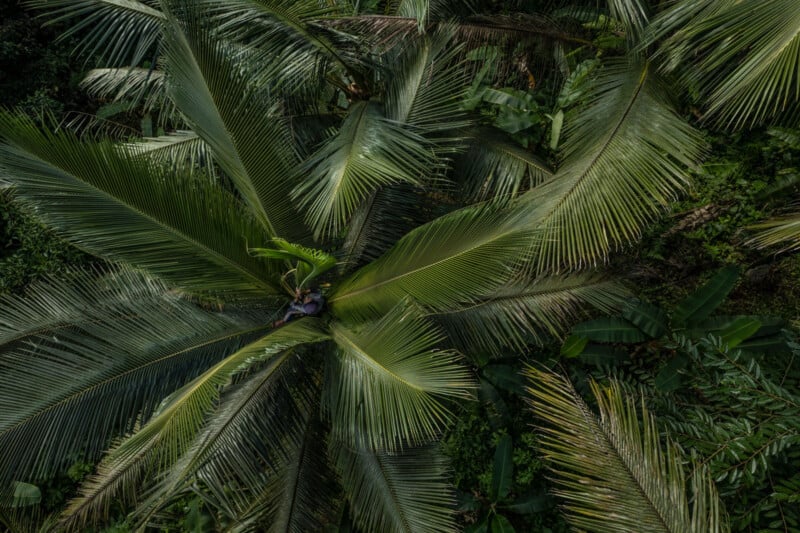 Man climbing palm tree to harvest leaves for a wedding ceremony in Bali, Indonesia. “This is a photo I could only get with a drone,” says Roh.
Man climbing palm tree to harvest leaves for a wedding ceremony in Bali, Indonesia. “This is a photo I could only get with a drone,” says Roh.Drone Advice for Other Photographers
“If you’re interested in drone photography, go for it,” says Roh. “You don’t need the latest and greatest drones either, just a desire to learn and get creative.”
Photographer drone pilots should maintain control, be conservative, and keep drones relatively close, Roh says. Even with caution, crashes can occur.
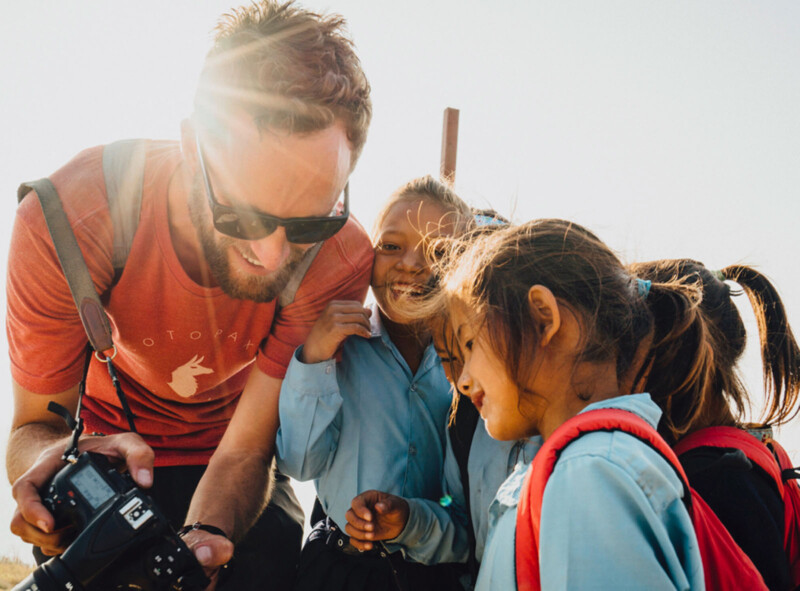 Photographer James Roh
Photographer James Roh“I crashed my drone in the Amazon rainforest,” he recalls. “It clipped a tree branch and got stuck in the canopy. Luckily, the locals were very adept at climbing and were able to get it for me. And it still works just fine!”
Image credits: Drone and aerial photographs by James Roh
About the author: Ken Klein lives in Silver Spring, Maryland; he is retired after a career in politics, lobbying, and media including The Associated Press and Gannett in Florida. Klein is an alumnus of Ohio University and a member of the Dean’s Advisory Council of the Scripps College of Communication. Professionally, he has worked for Fort Myers News-Press (Gannett), The Associated Press (Tallahassee), Senator Bob Graham, and the Outdoor Advertising Association of America (OAAA).









 English (US) ·
English (US) ·